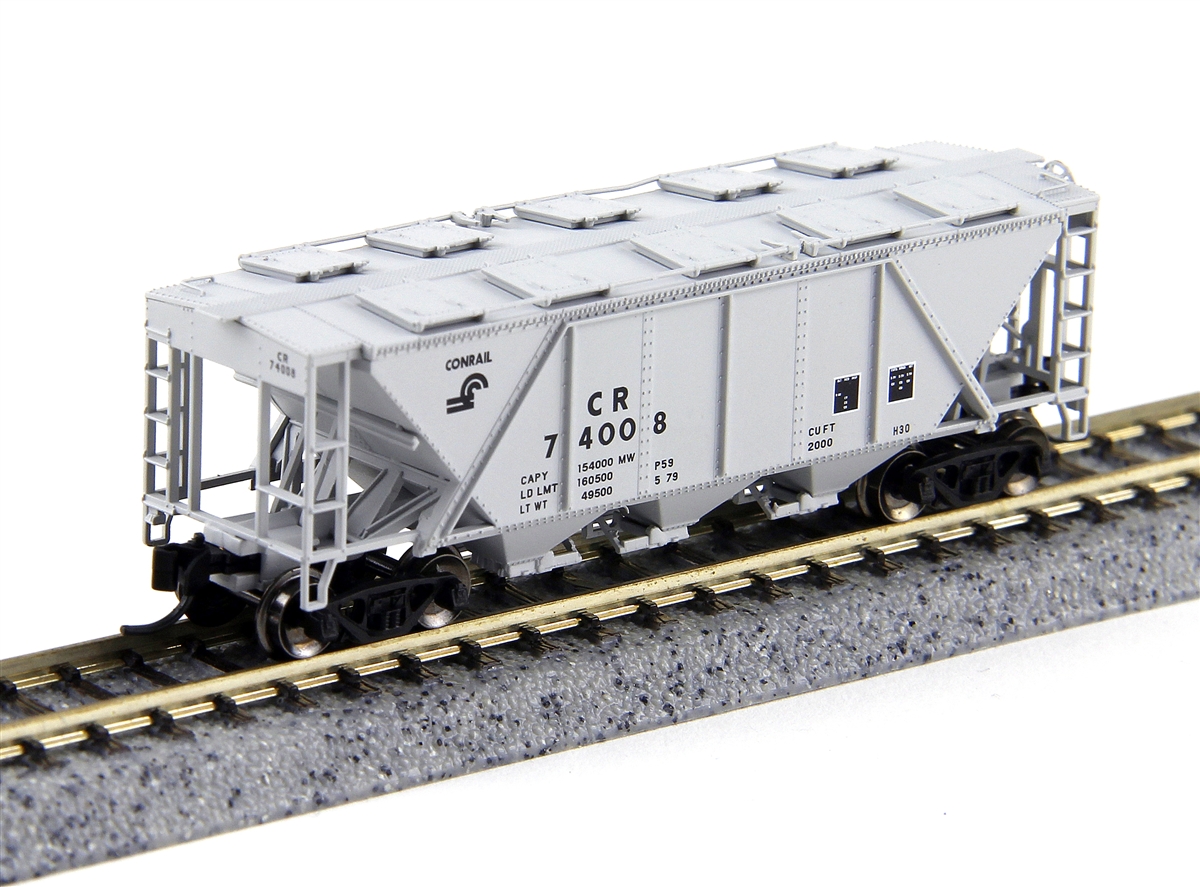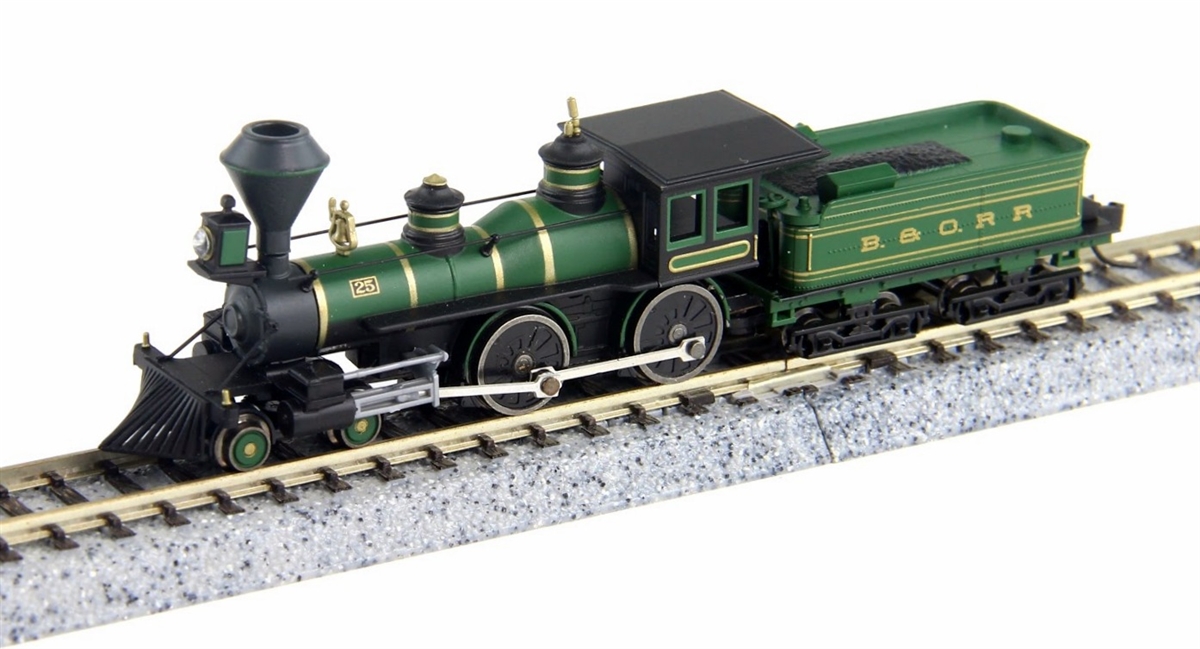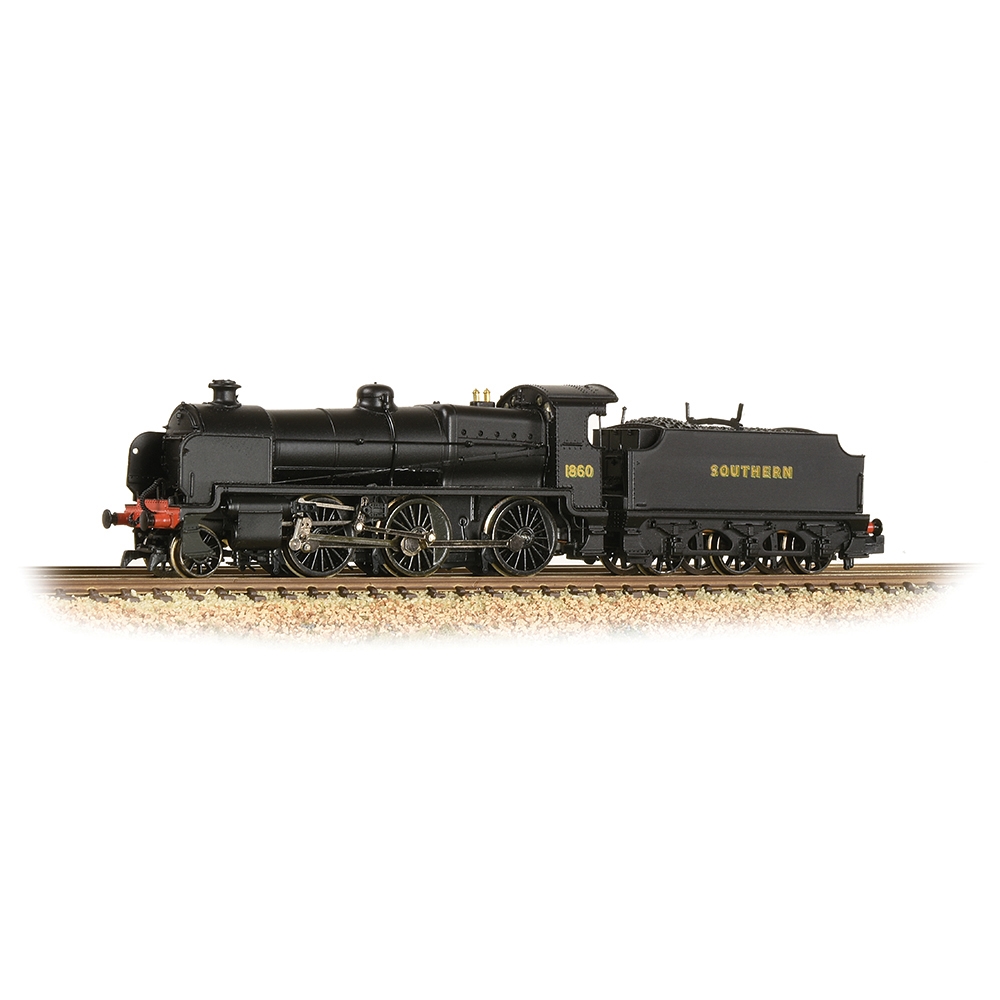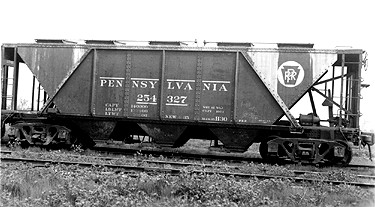Model Information: This 2015 Fox Valley tooling models the Pennsylvania railroad's H30 covered hopper of 1944.
Fox Valley Models captured the distinguishing features of this car. The running board, which features a raised diamond pattern, is integral with the roof (the pattern should also be on the brake wheel platform, but was omitted). The slope sheets and diagonal braces are both accurately at 48-degree angles. The locking mechanisms for the hatch covers follows the correct 3-2 pattern.
The ready-to-run injection-molded plastic model features a one-piece body; separately applied discharge gates, roof, center sill, brake wheel, and slope sheet bracing.
This tooling features crisp detail throughout including fine end ladders, hopper gates, separate brake detail, and hatches. Fox Valley's usual high standard paint and lettering is applied and the car is finished with body mounted knuckle couplers and FVM metal wheels. The car weighs .8 ounce, which is .1 ounce too light per National Model Railroad Association recommended practice 20.1. The metal wheelsets are correctly gauged. The couplers are at the correct height.
This tooling features crisp detail throughout including fine end ladders, hopper gates, separate brake detail, and hatches. Fox Valley's usual high standard paint and lettering is applied and the car is finished with body mounted knuckle couplers and FVM metal wheels. The car weighs .8 ounce, which is .1 ounce too light per National Model Railroad Association recommended practice 20.1. The metal wheelsets are correctly gauged. The couplers are at the correct height.
Prototype History: Until the 1930s, bulk-loaded material was generally carried in the ubiquitous 40 foot boxcar. The NYC innovated by adding covers to some of their fleet of 33 foot twin bay hoppers. In 1931, the Pennsy followed suit by introducing their own converted 2-bay coal hoppers. In March 1935, the PRR introduced their first from-scratch covered hopper, the H30. The first run consisted of 100 railcars.
PRR's H30 hopper had cast bolsters. The H30a version, however, had welded bolsters, except for some low-numbered H30a's which also had cast bolsters (probably parts left over from building the H30's). The 1951-built cars had a 5-ton greater capacity than the earlier cars, as well as slightly different roof rivet positions and hatch details. During the '60's, the capacity of the remaining cars was increased to 77tons from 70, probably by changing trucks.
PRR's H30 hopper had cast bolsters. The H30a version, however, had welded bolsters, except for some low-numbered H30a's which also had cast bolsters (probably parts left over from building the H30's). The 1951-built cars had a 5-ton greater capacity than the earlier cars, as well as slightly different roof rivet positions and hatch details. During the '60's, the capacity of the remaining cars was increased to 77tons from 70, probably by changing trucks.
Road Name History: The Consolidated Rail Corporation, commonly known as Conrail (reporting mark CR), was the primary Class I railroad in the Northeast U.S. between 1976 and 1999. Conrail is a portmanteau of "consolidated" and "rail" from the name of the company.
The U.S. federal government created Conrail to take over the potentially profitable lines of multiple bankrupt carriers, including the Penn Central Transportation Company and Erie Lackawanna Railway. With the benefit of industry-wide regulatory requirements being reduced (via the 4R Act and the Staggers Act), Conrail began to turn a profit in the 1980s and was turned over to private investors in 1987. The two remaining Class I railroads in the East, CSX Transportation and the Norfolk Southern Railway (NS), agreed in 1997 to split the system approximately equally, returning rail freight competition to the Northeast by essentially undoing the 1968 merger of the Pennsylvania Railroad and New York Central Railroad that created Penn Central. Following Surface Transportation Board approval, CSX and NS took control in August 1998, and on June 1, 1999, began operating their portions of Conrail.
The U.S. federal government created Conrail to take over the potentially profitable lines of multiple bankrupt carriers, including the Penn Central Transportation Company and Erie Lackawanna Railway. With the benefit of industry-wide regulatory requirements being reduced (via the 4R Act and the Staggers Act), Conrail began to turn a profit in the 1980s and was turned over to private investors in 1987. The two remaining Class I railroads in the East, CSX Transportation and the Norfolk Southern Railway (NS), agreed in 1997 to split the system approximately equally, returning rail freight competition to the Northeast by essentially undoing the 1968 merger of the Pennsylvania Railroad and New York Central Railroad that created Penn Central. Following Surface Transportation Board approval, CSX and NS took control in August 1998, and on June 1, 1999, began operating their portions of Conrail.
Brand/Importer Information: Fox Valley Models is a small supplier of
model railroad and related products. FVM
started by finding solutions to different
challenges that model railroaders were
faced with. Our first products resulted
from a need to equip custom built
passenger cars with tinted windows made
of an ideal material; thin, flexible, easy to
cut, simple to install, available in multiple
colors and be affordable. We met those
needs and even included a frosted
version for the car's lavatory windows.
Other challenges inspired additional products including wooden grade crossings, trestles and different lineside structures. As our product line expands, input and requests from friends and customers help shape the product selection further.
Future products, under development, include more parts, structures, details and rolling stock. We strive to offer a good quality product at an affordable price.
Other challenges inspired additional products including wooden grade crossings, trestles and different lineside structures. As our product line expands, input and requests from friends and customers help shape the product selection further.
Future products, under development, include more parts, structures, details and rolling stock. We strive to offer a good quality product at an affordable price.
Item created by: gdm on 2017-02-19 07:25:41. Last edited by gdm on 2021-09-27 12:17:12
If you see errors or missing data in this entry, please feel free to log in and edit it. Anyone with a Gmail account can log in instantly.
If you see errors or missing data in this entry, please feel free to log in and edit it. Anyone with a Gmail account can log in instantly.











